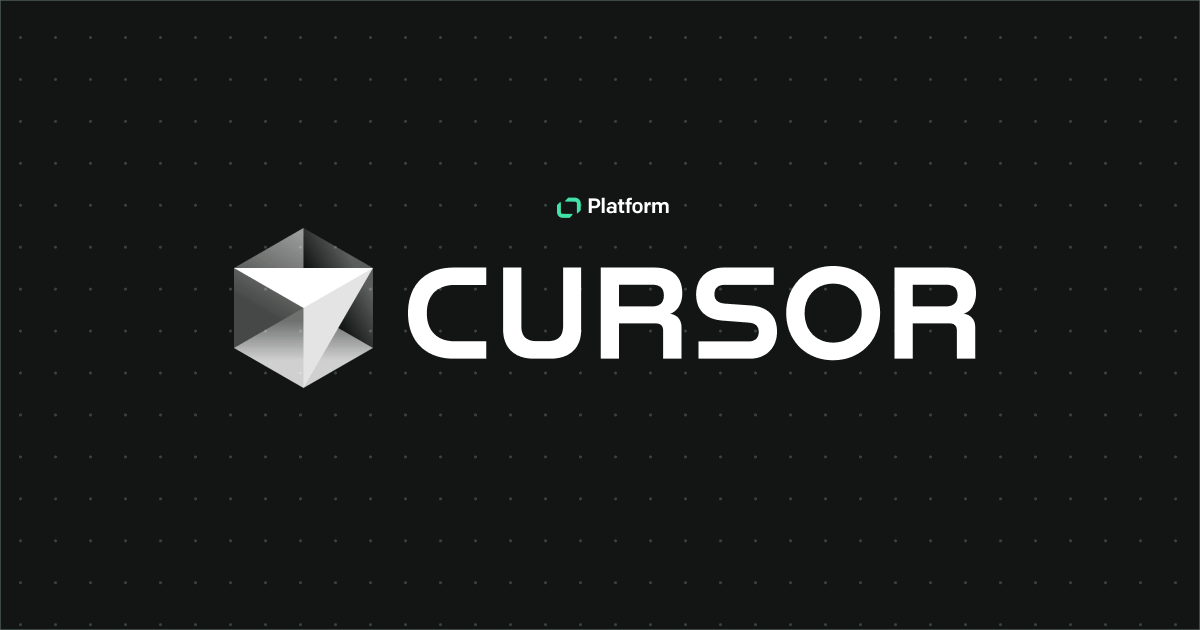The large language model scene is booming, and perhaps already flooded. The ongoing AI race between leading models is intensifying, with no clear leader yet emerging. DeepSeek, OpenAI’s ChatGPT, Microsoft’s Copilot, Anthropic’s Claude, Google’s Gemini, Meta’s Lama, Mistral, and Alibaba’s Qwen are some of the most well-known but by no means all of the LLM-driven products competing for market share.
But at the top of this “battle royale” sit two big names — both considered AI titans in the field — leading to the inevitable DeepSeek vs ChatGPT.
Predicting the winner in the ChatGPT DeepSeek rivalry is a fool’s errand. Indeed, as with cloud computing providers, there may be room in the market for more than one.
Introducing large language models
A large language model (LLM) is a type of generative artificial intelligence (AI) that specializes in natural language processing (NLP). It is a program capable of conversing with a human as if it were itself a human. When explaining such a complex topic, covering all the main points is important to ensure a thorough understanding.
Conversations with an AI model can be convincing; one can almost believe there is intelligence on the other end. But LLMs are not intelligent — at least not yet. LLMs are machine-learning algorithms with billions of parameters trained on colossal sets of data. They are trained to guess or generate contextually correct words until they are proficient at guessing correctly and handling creative tasks.
The model generates useful content through follow-up processes such as reinforcement learning from human feedback (RLHF) and supervised fine-tuning (SFT). The result has the outward appearance of intelligence but is really an advanced word-guesser. LLM developers have added reasoning and sophisticated tuning mechanisms that make them proficient, even brilliant, at solving complex problems and technical tasks.
The key points of how LLMs function include their ability to process vast amounts of data, generate human-like text, and adapt through fine-tuning and feedback.
LLMs shifted from esoteric technical specialization to the mainstream in 2022 when their developer, OpenAI, released ChatGPT as a freely available preview. Arguably, for the mainstream, this is one of the most crucial moments in AI technology’s history. One of the primary applications of LLMs is content creation, where these models are used to efficiently generate articles, outlines, and other written material.
A couple of years later, the Chinese company DeepSeek released its own LLM claiming to do more with less. Which one is better, and what are the differences?
A brief history of ChatGPT
Hailing from California, USA, and founded in 2015 with plentiful funding from high-profile backers, OpenAI is a leading organization in the recent boom in artificial intelligence. In 2022, they famously released a free preview of ChatGPT. The wildly successful chatbot has since barged its way into our active vocabulary and inspired imitators from start-ups to tech giants.
ChatGPT quickly gained popularity for its ability to generate engaging conversational content, handle casual conversations in multiple languages, and produce creative content that appealed to a wide audience. Notably, ChatGPT has demonstrated significant improvements in providing nuanced responses and understanding context across diverse topics.
OpenAI has been consistently adding new iterations of its models and capabilities to its catalogue, building on and improving what has come before.
A briefer history of DeepSeek
DeepSeek has a different story. Based in Hangzhou, Zhejiang, this high-flyer is owned and funded by the Chinese hedge fund High-Flyer. DeepSeek released its first model, DeepSeek Coder, in November 2023, but it was in January 2025 that the company upended the GenAI boat with its chatbot.
The new shark in the tank took a bite out of ChatGPT’s market share and share price. DeepSeek provided unique features such as advanced self-awareness, technical skills, and the ability to generate distinct responses, setting it apart from other AI assistants.
DeepSeek claims it created its models with a fraction of OpenAI’s budget. OpenAI has cried foul, claiming they have evidence of DeepSeek using their API to train their models.
DeepSeek has since followed up its inaugural model with more advanced products.
How do LLMs work?
A large-language model is a giant neural network comprised of an uncountable number of “transformers”, software with hundreds of billions of parameters or “weights”. The LLM itself is remarkable, but the weights, billions of adjustable numeric parameters, and how they are tuned (trained) make it phenomenal. There are three key steps in an LLM:
Pre-training
A costly, risky, and time-consuming endeavour, the model uses planet-sized data and computing power to build an internal statistical map of language. The training data are usually huge slices of the Internet, while the computing power to carry out the training comes from thousands of graphics processing units (GPUs) or, in Google’s case, tensor processing unit (TPU) clusters. Robust AI infrastructure is essential for supporting large-scale model training and deployment.
To train a model, we ask it to first predict the next word in a sequence and compare its guess to the real word. We can compute the error and use that value to adjust the parameters by comparing the predicted word to the actual. Repeat this process trillions of times, and the result is rich real-world knowledge represented by an array, billions inside, of numbers — the weights.
Post-training / fine-tuning
Here is where the raw model transitions to sophisticated AI. Special techniques take the raw weights and turn them into something useful. Examples of these techniques are:
- Supervised fine-tuning: Feed the model example conversations or tasks with “ideal” answers written by humans.
- Reinforcement Learning from Human Feedback (RLHF): Show multiple model outputs to a human rater, learn their preference ranking, and use that as a reward signal (via a second “reward model”) to push the LLM toward safer, more helpful replies.
- Safety tuning/red-teaming: Systematically probe for bad behavior (bias, privacy leaks, disallowed content) and add counter-examples to discourage it.
- Inference: Most users will have experienced inference, the phase of receiving an input (prompt) and deciding on the best response (completion) based on statistical probabilities. Here, the LLM “tokenizes” or chops up your prompt text into pieces. The text (and possibly text from earlier in your chat session) is converted into a vector matrix or series of numbers. That vector matrix is sent through all of those “pre” and “post”-trained transformer layers so that the LLM can produce probabilities (an educated guess) for the next token.
Finally, the LLM uses one of various clever strategies to decide what token to emit, re-feeding the new token until it has a whole completion or is told to stop. Optionally, the LLM can apply filters or guardrails to remove inappropriate or harmful content from the completion.
DeepSeek vs. ChatGPT — what is the difference?
ChatGPT and DeepSeek appear the same — their apps and web interfaces may be twins separated at birth — and both offer similar functions and features. DeepSeek and ChatGPT are AI tools underpinned by state-of-the-art AI language models, showcasing their key features in superior performance.
Both DeepSeek and ChatGPT can be used as AI assistants to carry out data analysis or to write blog posts (not this one!). Both are superb at creative and technical tasks.
The differences between them lie in what they offer and what they do.
Operating models
ChatGPT
ChatGPT has a proprietary license and is usable only via OpenAI’s website, API, or app. OpenAPI falls under U.S. jurisdiction for governance and compliance, ensuring consistent performance and continuous improvement in its offerings. Using ChatGPT is like subscribing to a cloud service like Amazon Web Services or Google Cloud.
ChatGPT offers advanced voice mode as a premium feature, enabling users to interact with the AI through voice commands, including interrupting responses, live vision support via camera, and enhanced voice interactions. Additionally, ChatGPT can automatically answer questions in various workflows, such as responding to queries received through Google Forms and organizing the responses in Google Sheets.
DeepSeek
DeepSeek's products use an MIT license, allowing users to download and deploy its model and weights (open weights) in their own infrastructure. This option alone is a reason to select it for technical users seeking to avoid vendor lock-in.
DeepSeek also offers a paid subscription for its AI models based on tokens rather than a fixed cost. In this way, DeepSeek is more like an open-source software provider like the Apache Software Foundation, which is free to use but requires technical expertise to deploy.
As a company under Chinese jurisdiction, DeepSeek has been banned by many official bodies and corporations outside China due to concerns over safety and privacy. For example, the model might spy on users or "phone home" if deployed locally.
There are also concerns that the data on which DeepSeek's models were trained have been censored or skewed in line with the Chinese Communist Party's policies.
While these concerns cannot be 100% verified, the geopolitical stance of both companies' host countries cannot be ignored — more on that later.
AI model ranges and what they do
ChatGPT and DeepSeek offer various models, each with its own levels of specialization and sophistication.
ChatGPT
ChatGPT works with text, images, and audio, and also has an Integrated Code Interpreter, DALL-E 3-style image generator, file search, and plug-ins.
Free ChatGPT users have access to GPT-4o only.
Paying customers (“Plus”, “Pro”, and “Enterprise” plans) can switch between models on ChatGPT’s model selector.
Notable entries in ChatGPT’s already beefy model family include:
- o3 is a state-of-the-art “frontier model” that pushes the boundaries in coding tasks, mathematics, science, and visual perception. It is great at coding, coming up with ideas, solving problems, and analyzing data, images, and charts. The o3 model demonstrates advanced coding skills, making it highly effective for programming tasks such as writing code for a simple calculator or automating workflows. Access to o3 requires at least a $20 per month “Plus” subscription.
- o3 pro is a reasoning model for solving hard problems, designed to tackle complex problem types that require multi-step, logical solutions.
- o4-mini is a leaner, cheaper reasoning model. It excels at mathematics, coding, and visual tasks. It does not perform at o3’s level, but for its size and cost, it punches above its weight and will suit most use cases. o4-mini is available (with limited access) in the “Free” tier. This model is also proficient at solving math problems.
- OpenAI o4-mini-high is OpenAI’s addition to its reasoning series. Like the other reasoning models, it excels in coding and other advanced reasoning tasks. o3-mini claims to be fast and cost-effective. While it does not offer visual reasoning, it excels at code suggestions and can find up-to-date answers with links to relevant web sources.
- GPT-4.5 is OpenAI’s best model for chat, and according to the company, it is a product of scaling up “pre” and post-training. The result is better pattern recognition and creative insights. It promises a more natural feel, broader knowledge, and the ability to better understand what the user wants. This model is available as a research preview and requires a minimum of a “Plus” subscription.
- GPT-4o is OpenAI’s flagship model, available to “Free” users, and serving the bulk of ChatGPT users. OpenAI recommends using GPT-4o for most use cases, especially if you need tools and vision. It offers real-time reasoning across audio, vision, text, and AI research and is available in ChatGPT and the API as a text and vision model.
You can find a more complete catalogue of OpenAI’s products on their website.
DeepSeek
DeepSeek currently allows text only via web chat, app, and API. DeepSeek offers two model lines: V3 and R1.
- V3 is a highly performant, general-purpose model that compares well with ChatGPT's 4o offering. V3 uses a "mixture of experts" technique to make it cheaper to train and great at inference.
- R1 is a more refined model with powerful reasoning abilities. Not only does it answer prompts, it also explains how it determined the response with a step-by-step chain of thought. Anecdotally, its reasoning abilities seem on a par with the best that ChatGPT has to offer.
DeepSeek vs. ChatGPT — which do you use?
...it depends. DeepSeek is, without doubt, something that has shaken up the AI scene. A super-powerful and functional model with a permissive license, local deployment options, and free access to its weights. Technical users will love it, but concerns around its security and biases, rightly or wrongly, will hamper its adoption.
DeepSeek is owned and funded by a hedge fund, meaning and artificial intelligence may not be its owners' priority. They may even take a short position against GenAI technology if it benefits their investors. However, if DeepSeek can bed in and score a few high-profile successes, it may be a good enough option for users looking for flexibility and autonomy.
ChatGPT is a powerhouse with broader capabilities and advanced features. Genuine technologists back it, and its country of origin is one that liberal democratic markets will find more comfortable. OpenAI has heavily invested in this technology, ensuring consistent performance, and will continue to lead the frontier.
Its cost and closed model are barriers to entry. But any public or private organization with a long-term strategy involving leading-edge artificial intelligence will consider ChatGPT as its only serious option.
A solo tinkerer or startup with limited budgets should try DeepSeek simply to control costs and avoid usage caps, especially for handling everyday tasks. Enterprises needing computer vision, image generation, robust service-level agreements, technical support, and regulatory compliance should consider the ChatGPT/OpenAI stack as the safer bet for efficient solutions.


